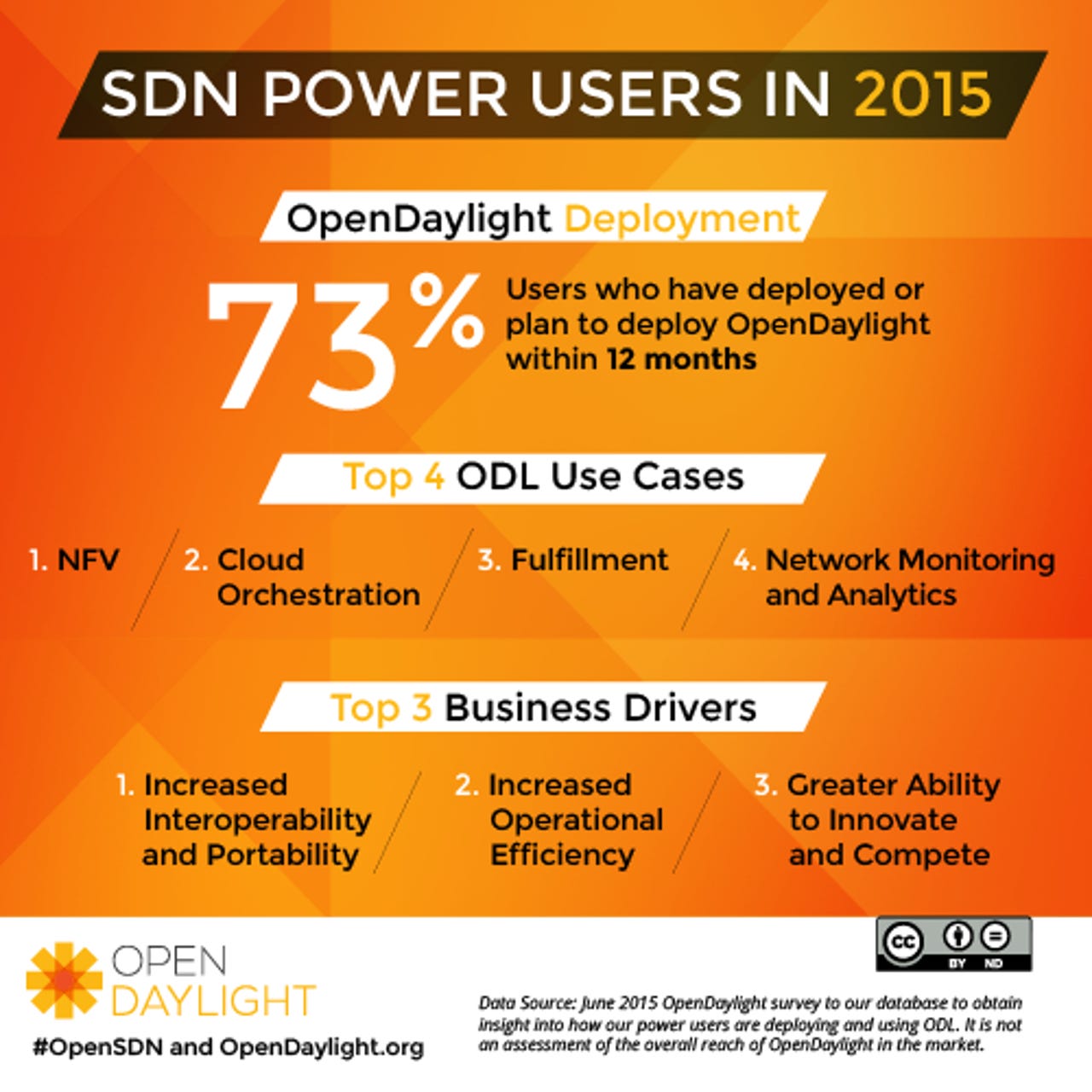OpenDaylight dawn: Open-source software defined networking goes into production

SANTA CLARA, Calif. -- At the OpenDaylight Summit, a conference for OpenDaylight (ODL), the open-source software defined network (SDN) project, Margaret Chiosi, a distinguished network architect at AT&T Labs said, "OpenDaylight is no longer 'slideware.' We're using it." She's right. We are.

As Neela Jacques, OpenDaylight's Executive Director said in his keynote, "Developers are investing in OpenDaylight. The project's 359 total contributors are, more than all the other SDN projects--Open Contrail, Open vSwitch, ONOS, etc.--combined."
What's even more important is that AT&T, Comcast, Orange and Chinese Internet giant Tencent are all using ODL in production. Tencent, with its over 500M monthly active accounts for its WeChat and QQ messaging apps and $13-billion per year in revenue, for example, has been using OpenDaylight for over a year now.
Jacques quoted Mary Ma, Tencent's chief architect as saying, "We request all our partners to be OpenDaylight compatible by end of this year." Actually, it's not a request. If they don't switch over, Tencent will drop them and find other partners.
In another OpenDaylight keynote speech, Alan Blackburn, VP of AT&T Domain 2.0, said that its ODL SDN is beloved by its corporate customers. Why? "They love they can dial-up and down their network." For business users, SDN is doing for the network what the cloud has done for compute and storage: Giving them the resources they need when they need them with flexible, on-demand pricing.
Read this
AT&T also eats its own SDN dog-food by using it to provide bandwidth to its consumer customers. Blackburn said, "Our mobile traffic has grown by 10,000 percent in the last few years. The number one mobile traffic driver is video. Meeting this demand with traditional switches is almost impossible, so we had to network smarter" and that meant switching to SDN.
Blackburn rhetorically asked, "How serious are we about this? We want 75 percent of our network using cloud infrastructure and SDN by 2020." AT&T would do it even faster if they could, But, the company realizes that it simply can't rip-out their existing infrastructure.
It's not just Internet businesses and carriers that are buying into OpenDaylight SDN. Jacques also pointed out that the Large Hadron Collider distributes 200+ Terabyte data sets every 24-hours to almost 500 research labs. Doing that with old-style networking would be almost as much of a challenge as finding the Higgs boson. With ODL SDN, it's doable every day.
Put it all together, and it's clear that ODL SDN is taking to the air as a universal service and not a mere science project.
Related Stories: